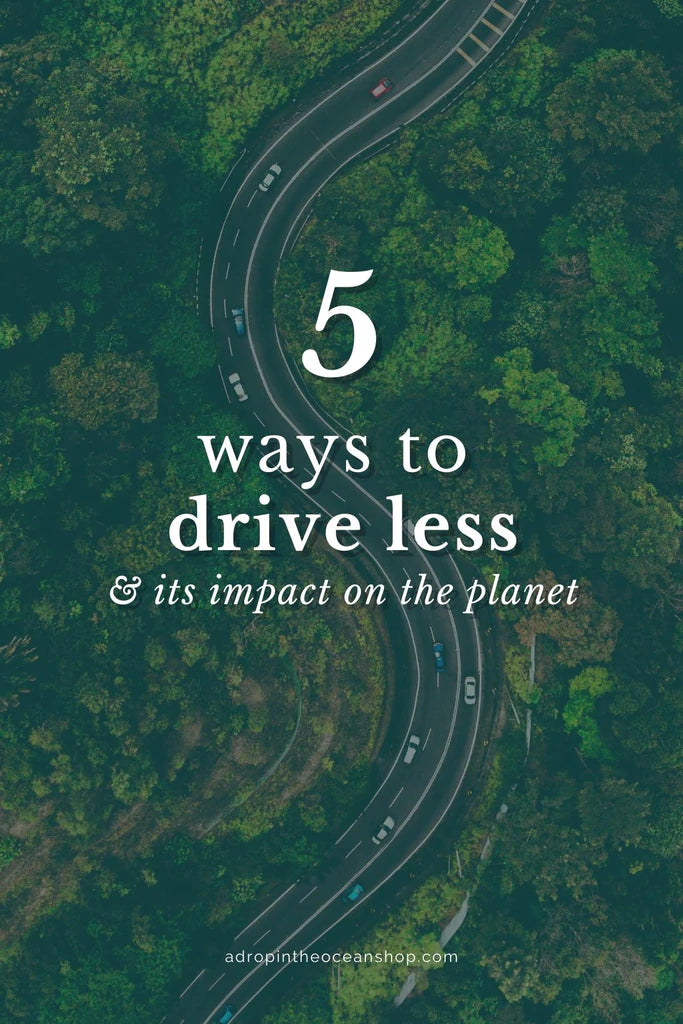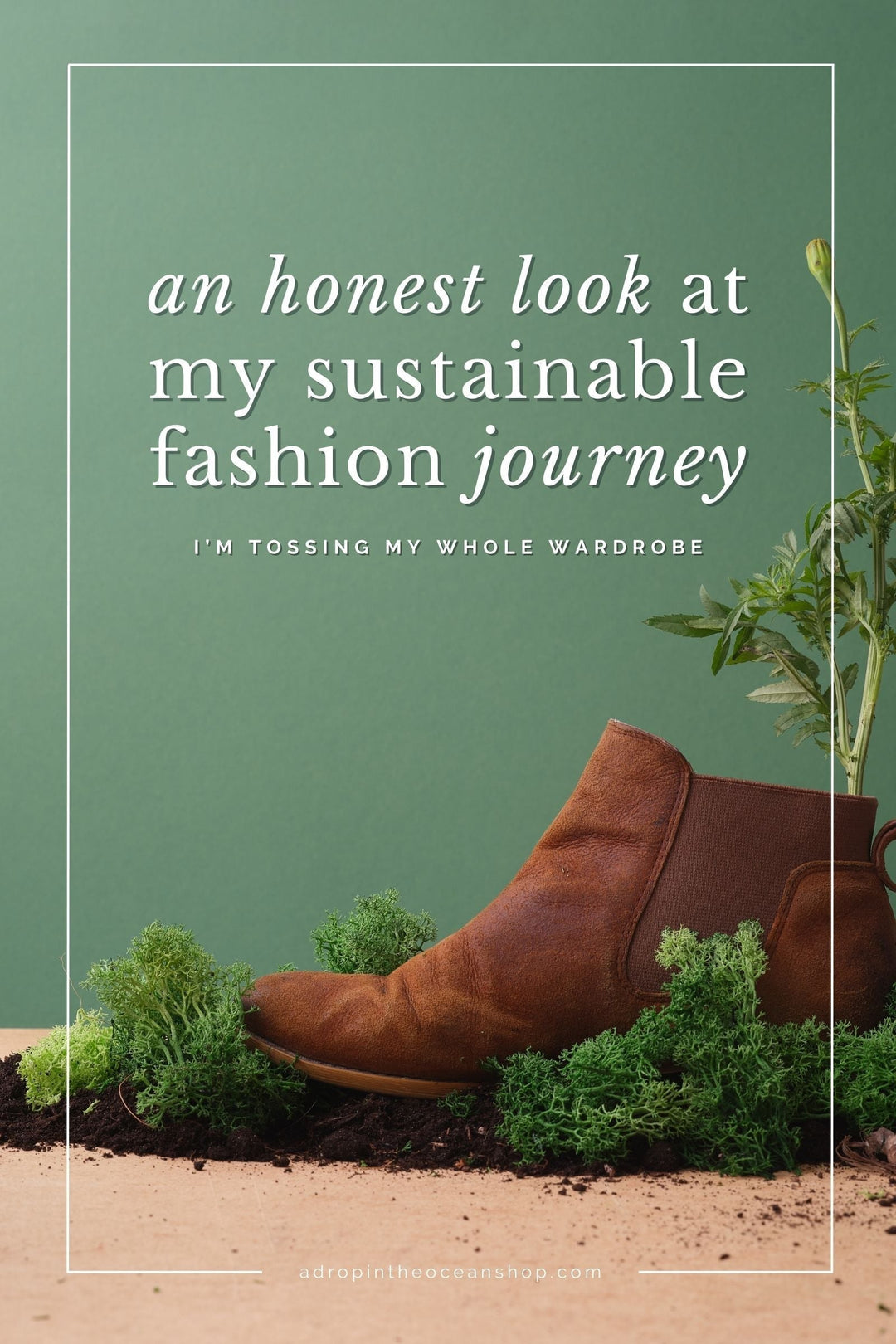5 Ways to Drive Less + The Impacts for Sustainability

This post first appeared in our weekly Make Waves Mondays email series on August 30, 2021. The audio is unedited from the original version.
It’s the eighth edition of Small Change Big Impact, our monthly mini-series within Make Waves Monday where we highlight one small change we can make that will have a big impact for the planet.
Today’s small change...driving just ten miles less each week.
Now before I dive in, I want to make something very clear.
We live in a society designed for cars. It is incredibly difficult to eliminate driving altogether, even in most cities. Especially if you live in a suburban or rural area, driving is pretty much a necessity. So, as always, I never want you to feel guilt for driving when that’s the only option available to you. We need policy changes and better city planning and big, bold, moves.
But that doesn’t mean that we shouldn’t do our small parts when and where we can.
Okay, we on the same page? Cool. Now let’s do this.
Did you know the average person drives about 260 miles every week?
That number comes straight from the US Department of Transportation. Personally, that feels like such a high number but then I think about how many people live in Tacoma and work in Seattle and it doesn’t feel so high anymore.
Nearly a third (29%) of all of the United States’ greenhouse gas emissions are from transportation. About a sixth (17%, or half of all transportation emissions) are just from “light-duty vehicles” (aka cars, trucks, SUVs, minivans, and vehicles designed for transporting light cargo).
That’s a huge portion of our emissions just from one aspect of life - getting from Point A to Point B!
But like I said, we can’t expect everyone to just cut out driving altogether. That’s not possible right now.
The good news is, we don’t need everyone to stop driving to make a difference.

If everyone reading this post drove 10 miles less just this week…
The carbon savings would be the equivalent of taking 1.5 cars off the road completely for an entire year. That’s 7,622 pounds of coal not burned.
We could supply nearly an entire home (0.83 homes) with all of its energy needs for a full year if everyone reading this email intentionally drove ten miles less this week.
How insane is that?!
(We’re a relatively small group here - as I write this, there are 1733 EcoWarriors on this list.)
But what if everyone reading this post drove 10 miles less every week for the rest of 2021?
That would be like taking 27 cars completely off the road for a full year.
That would save 137,203 pounds of coal from being burned.
The energy saved could supply 15 homes with all of their energy needs for an entire year.
There are only 18 weeks left in 2021 - and this is the kind of impact we can have with just 10 miles less each week?? In case you can’t tell, I’m eco-nerding out hard right now.
So let’s take it just one step further.
If everyone in the US drove 10 miles less each week for the rest of 2021…
The carbon savings would be like taking 5,112 cars off the road completely for an entire year.
We’d save nearly 26 million pounds of coal from burning.
We could power 2,831 homes for a full year.
I’m shook.
So if you’re driving the average of 260 miles each week, and you drive just 10 less miles, that’s literally cutting your driving by less than 4%. And look at those numbers, my friend. Look at how many emissions we can save by cutting our average time on the road by less than 4%.

So how do we do it?
You know me by now, my friend. You know I’m not gonna leave you hanging without some practical tips to make sustainable moves.
Work from Home
Many of us are still working from home, but if your company wants you to go back to the office now or in the future, can you negotiate a day or two to work from home each week?
Carpool
I won’t lie to you, friend. This one is probably my least favorite of sustainable transportation tips. I wrote a whole blog post on it back in the day. TLDR; carpooling with a partner I lived with to the same office every day did not feed my introvert soul, and we stopped that sustainability experiment pretty quickly.
To be fair, when I carpooled to my internship in college with several other interns, that actually wasn’t bad. I still lived on my own so I had plenty of Krystina time.
So depending on your personality, your coworkers, and your commute, this may be a great option for you! I believe there are even apps for coworkers to find and coordinate carpooling. Maybe you could work with your company to provide this app and offer incentives for carpooling! Take your small change and run with it, my friend!
Combine Trips
If you tend to run errands sporadically, take a few minutes one day to plan out all of your errands for the week. Get them all on a list and make a plan to do them all in one day (maybe even on your way home from work so you’re not making extra trips?).
Got several places to go? Pop them all into Mapquest’s route optimizer to find the most efficient route (still waiting for Google to add an optimizer tool…👀). You’ll save time, emissions, and money.
Public Transit
I know this isn’t an option for everyone. I grew up in a small town with no public transportation. I distinctly remember sitting in Swahili class in college and we had to tell a partner about the public transportation in our hometown and my partner was so confused when I told her we didn’t even have buses. “But..everywhere has buses!” she said, confused.
But if you live in a city with public transportation of any sort, can you make the most of it?
Check out the Transit app to help you get from Point A to Point B as efficiently as possible - including detailed public transit info (Is that next bus overly crowded? The app will tell you!), walking, biking, ridesharing - it’ll combine it all. The app is currently available in dozens of cities across the US and the world.
And if you’re in Tacoma and want to start using more public transportation but don’t know how, check out Downtown On The Go. They’re like a central hub for all this transportation info. Their mission is to get more people traveling sustainably, safely. They work with residents and city officials to build a robust platform and work towards those large-scale, long-term solutions we all need. You can even contact them directly and they’ll help you plan your route or even go on a practice ride with you! Highly recommend.

Walk or Bike
Going somewhere less than a mile or two away? Can you walk or bike there rather than drive?
This is something I’ve been trying to do more over the last few months. I feel incredibly lucky that I live less than two miles from my two groceries of choice - and that to get to either of them I get to walk through a beautiful city park. I don’t typically buy a lot of groceries at a time, since I’m just feeding myself and I don’t want anything to go bad before I can get to it, so I can usually get by with just one or two collapsible shopping bags in my purse. If you’re buying groceries for your family or don’t live as close to your grocery store as I do, this obviously won’t work as well for you.
But think about some other places you go. Can you walk to work? Can you walk to visit a friend instead of drive? Can you walk to your weekly meetup group? Whatever it may be, if it’s less than a mile or two, is it walkable or bikeable?
My Unpopular Opinion
I mentioned rideshare apps, so I also want to share my unpopular opinion of the day. Ridesharing apps like Uber and Lyft aren’t always better, unless you (and others!) actually choose the shared ride option. Otherwise there are just a bunch of extra cars on the road driving around waiting for someone to need a ride somewhere.
Ridesharing apps have their place, for sure. And I’m glad they exist. But they may not always be the better solution to driving when compared to things like public transportation or carpooling. Just things to ponder :)
So whaddaya say, friend? Will you join me in cutting out 10 miles from your regular driving this week? Drop a comment below and share your goal for this week so we can all hold each other accountable!









Leave a comment